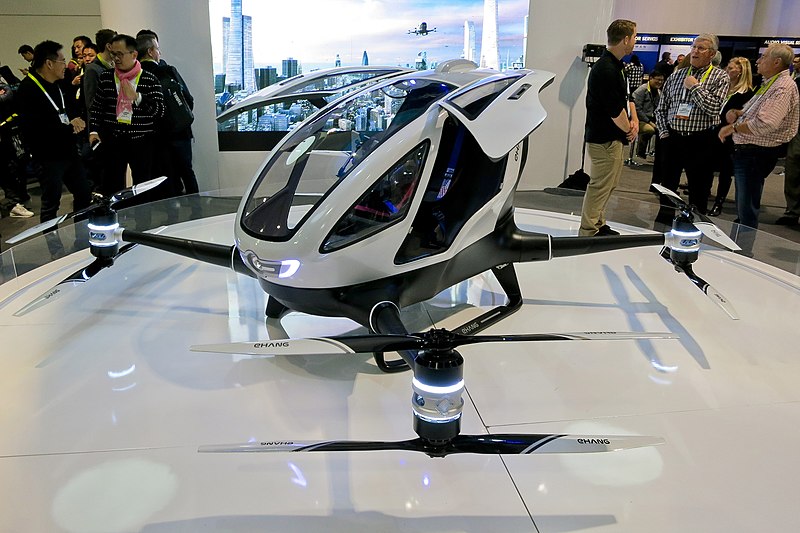
The aviation industry together with NASA and a community of academic partners has opened a new type of air terminal called the Vertiport (Vertical-Airport).
Known as Urban Air Mobility (UAM), the intention is to safely and efficiently transport passengers and ship cargo by rising above the congestion of busy street surfaces.
These aircrafts take off and land vertically like helicopters, as the name suggests. They rely on sets of electrically driven rotors like hovering drones instead of being powered by jet turbines.
Aviation industry to conduct more tests for flying taxis to operate
Jaiwon Shin, NASA’s associate administrator for aeronautics research, said, “The convergence of technologies, and new business models enabled by the digital revolution, is making it possible to explore this new way for people and cargo to move within our cities.”
However, before the official operation of the flying taxis, there is still a lot of research to be done, and tests need to be conducted. Operating rules and regulations also need to be written and adapted.
NASA is helping the UAM community to identify expected key challenges and analyze the research. They will also develop and test criteria needed to overcome challenges.
Shin said, NASA’s part reminds him of the quote often attributed to President John F. Kennedy, who was fond of saying, “A rising tide lifts all boats.”
NASA will help lift aviation industry more to success
Technology and systems developed from NASA related to UAM will help lift a new aerial marketplace for flying taxis to success.
For over a century, with its predecessor organization, the National Advisory Committee for Aeronautics (NASA) has played a critical and successful role in aviation.
Today, every U.S. airplane and air traffic control facility has, or in some way relies on, aeronautics technology that originated from NASA.
Pontoise-Cormeilles’ vertiport, a regional airport located forty kilometers northwest of central Paris, opened on November 10th and serves only as a prototype thus far.
Pontoise-Cormeilles vertical airport is the first of its kind
As the first of its kind in Europe, the Pontoise-Cormeilles’ vertiport has no matching facility to act as a destination. However, Groupe ADP, which manages Paris’ airports, hopes that this will soon change.
The company intends to operate at least two routes in the region with a total of ten air taxis. These will each fly two or three trips an hour by July 2024, when the Paris Olympics begin.
The routes will connect the Olympic Village with conventional airports as well as the Paris heliport at Issy-les-Moulineaux on the southern part of the city near an emergency medical center.
Testing the flying taxis at Colorado Air and Space Port
The first round of tests was conducted at a facility at the Colorado Air and Space Port in Adams County in March.
A fighter jet engine was used to blast the experimental device with air heated to 788 degrees Fahrenheit. This is approximately the temperature it would experience when traveling at 2,532 miles per hour.
According to the company, the device cooled the airstream to a manageable temperature in less than 1/20th of a second. This was deemed to be “a hugely significant milestone,” as put by Reaction Engines CEO Mark Thomas.
Experts excited about successful flying tests at air terminals
Other experts expressed happiness for the successful test. Jeffrey Hoffman, an aerospace engineering professor at MIT, said, “It’s very exciting.”
“They’re basically trying something that’s very new, pushing materials to extreme limits, and there’s a lot of unknowns in there,” he added.
They will challenge the pre-cooler with temperatures even higher than the 1,800 degrees Fahrenheit typical of flight at around 3,836 miles per hour. This is the threshold speed for hypersonic flight in future testing.
Reaction Engines also revealed that flights powered by its extremely cool engine could someday reach speeds of Mach 25, or 16,537 miles per hour, in space although this will not be anytime soon.
Innovative flying vehicles will someday reach space
Hoffman said, “There’s a long way to go before we’re flying hypersonic vehicles from the surface of the Earth up into orbit. We just have to wait and see.”
In 2003, a NASA researcher presented a conference paper entitled “Personal Air Vehicles: A Rural/Regional and Intra-Urban On-Demand Transportation System.”
NASA continued to research and study the topic, and, in 2016, it published a study about on-demand mobility (ODM), the results of which helped inspire and bring the UAM vision to life.
NASA to ensure safety of new flying transportation
Davis Hackenberg, a NASA engineer said, “Now, our goals are to help develop and enable as much as possible what we like to think of as an entire ecosystem when it comes to Urban Air Mobility.”
“We’re looking at the best ways to do this and learning a lot as we go,” Hackenberg, who is also helping to coordinate the agency’s UAM activities, added.
NASA is not only ensuring a high degree of safety but also that all air vehicles remain within the limit of acceptable noise levels. It will also be helping with its electric propulsion research.
See all the latest news from Greece and the world at Greekreporter.com. Contact our newsroom to report an update or send your story, photos and videos. Follow GR on Google News and subscribe here to our daily email!



